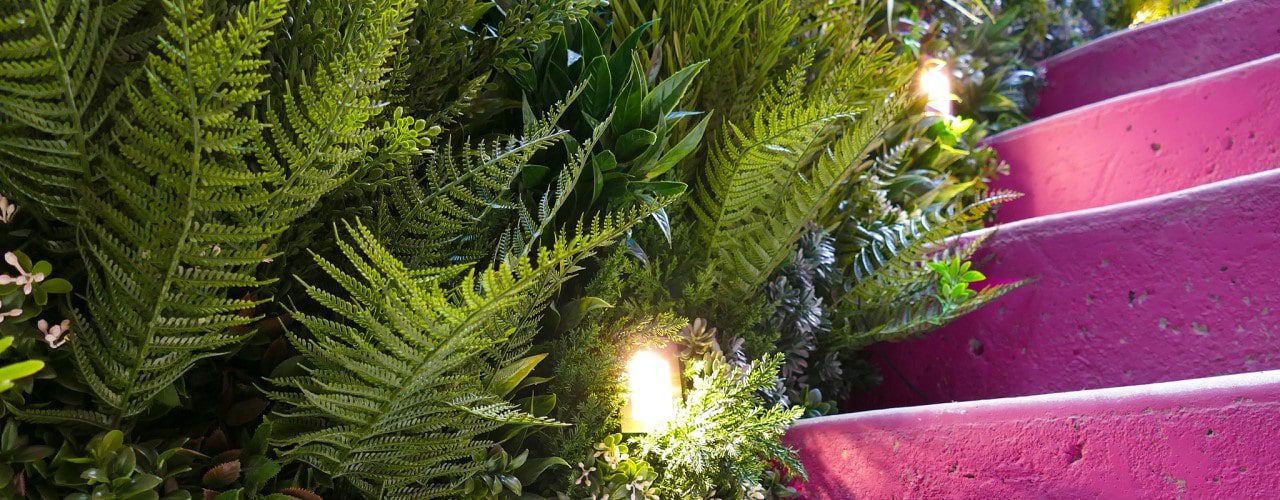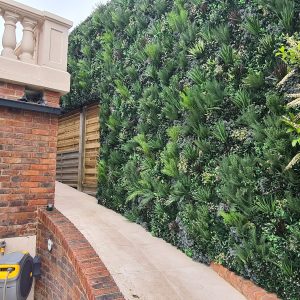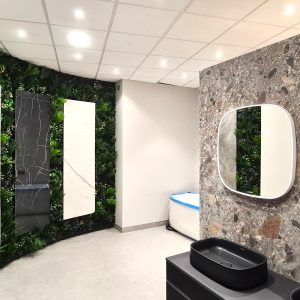14th June 2017. The Grenfell Tower block in North Kensington, London goes up in flames and 72 people are tragically killed. What followed was a shocking realisation that hundreds of buildings up and down the country were covered with materials that posed a huge fire risk. In the time that has passed, the building industry has become acutely aware of the potential hazards of products not fit for purpose and undertake a considerable amount of due diligence to ensure that anything used on a building, indoor or outdoor, is both safe and suitable. By understanding the risks involved, and by only selecting products that have been thoroughly tested, lives will undoubtably be saved.
A fire needs three factors to keep itself alive: fuel, oxygen and heat. This is known as the fire triangle. When firefighters tackle a blaze, the hope is to remove one of the three so that a fire cannot spread. If you add water, you will cool the fire and suffocate it by removing oxygen. If you remove the source of fuel from the fire, you remove the ability for the fire to develop. Any product that does not meet a certain standard, has the capability of being that fuel. Fire Retardants are made with one objective, to delay the combustion of a polymer at the end of the plastics life (in case of a fire).
Today, manufacturers produce products from materials that would, without the addition of FR additives, probably add fuel to a fire. History teaches us that it is necessary to put in place certain checks that will ensure the end user of a product or material has some knowledge of how the product will perform in the event of a fire. When buying products, knowledge of the reaction to fire classification will enable you to use the product in a way that satisfies building and fire control regulations. This may mean that you have brought a product and it can be used only in certain areas of a property. For instance, you have purchased some wall cladding and the building code states, as per its fire classification, it cannot be used around a fire escape.
We are often asked if our products are ‘FR’. A very valid question, but firstly we need to understand what ‘FR’ really means. Does it mean ‘fireproof’, ‘fire retardant’, ‘fire rated’ or ‘fire resistant’? Simply put:
- Fireproof pertains to materials that are impervious to fire and non-combustible. Examples include cement, bricks, glass wool etc.
- Flame/Fire Retardants are additives, usually mixed into a material at an early stage that change the chemical makeup of the material that, when subjected to a fire, stave the fire of fuel.
- Fire Rated is a term that is generally heard when people are asking about a fire classification test result. In Vistafolia’s case, our panels hold a B,S1,D0 fire rating, the highest of any product on the market.
- Fire Resistance is generally what properties a product has once the fire retardant has been added. This is widely used in the fabric and textiles field.
Something else that comes up in conversation a lot is a request for a product that is ‘Class 0’. Class 0 is an old, somewhat archaic product classification, based on two small scale fire tests (BS476-6 and -7). The tests only measure the spread of flames over the surface of a material. Why is this a problem? In the light of Grenfell and other fire tragedies in recent years, the UK government has banned combustible cladding on high rise buildings. This is because, although the BS476-6 & -7 tests looked at the surface of a product, the internal material was not tested, meaning it was still potentially combustible. Building materials in the UK now must fall in line with the European classification system BS EN 13501-1:2018 ‘Fire classification of construction products and building elements.’
Vistafolia® takes fire safety very seriously and as such, we manufacture and specify exactly what classification our products must meet at the point of manufacture in our factory. We independently test our products to BS EN 13501:1 Fire Classification of construction products and building elements Part 1: Classification using data from reaction to fire tests, this standard specifies the type of testing and how the results are interpreted. These tests are undertaken at internationally recognised and certified test laboratories. Reaction to fire testing is designed to measure the contribution of a material or product to the early stages of a fire. The areas under scrutiny during the test are ignitibility, flame spread, heat release, smoke production and flaming droplets.
The tests undertaken are:
- BS EN ISO 11925 – An ignitability test. This test determines the ignitability of the sample to direct flame attack. It will also allow the assessor to see if the product produces flaming droplets during the test. Flaming droplets can ignite other materials in the vicinity and potentially cause a fire to spread.
- BS EN 13823 – A test that measures how a product reacts when subjected to an attack from a single burning source. Data is collected on heat release, surface spread of flame and smoke production.
To achieve anything higher than an E,d0 classification, a product must be tested under these two tests as an absolute minimum. Vistafolia’s B,s1,d0 rating means that, although the product may add fuel to a fire, it will have limited contribution.
If a product is only tested to BS EN ISO 11925 the best classification it can hope to achieve is an E,d0/1/2 rating.
- An ‘E’ classification means a “potentially high contribution” to a fire.
- A ‘d0’ means that no flaming droplets were recorded and very limited spread of flame across the sample.
- A ‘d1’ means that there were no droplets, but an increased spread in flame
- A ‘d2’ means that, during a 15 second exposure to fire, the flame did not spread further than 150mm from the source of the flame. However, there were flaming droplets that that ignited a paper placard that is sat under the sample.
The B is the overall classification this is achieved by meeting certain parameters set out in the two tests ISO-13823 and ISO 11925-2
The S1 refers mainly to the ISO 13823 test and the D0 refers to the second test (ISO 11925)
The first test (ISO 13823) measures the FIGRA….Fire Growth Rate and to meet class B it must be <120 w/s LFS (lateral flame spread) must be < edge of specimen THR600s (Total heat Release within 600 seconds) < 7.5 MJ
The second test refers to the droplets and spread of flame from the edge of the specimen. The flame cannot spread more than 150mm (6”) within 60 seconds.
Other parameters measured during the tests are:
SMOGRA —Smoke Growth Rate (m2/S2) AND TSP600s (m2) —–Total Smoke Production over 600 seconds Results for SMOGRA ———0.1 TSP600s —-14.3
A lot of companies don’t spend time completing these proper fire tests. We regularly see certificates that are supposed to be for polyethylene foliage, the same material that Vistafolia® use, but upon closer inspection of the test report, it turns out to simply be a fabric test. We would strongly recommend checking with your retailer and asking to see a test report. If at any point a supplier or manufacturer is hesitant to release fire testing documentation it would probably be best to walk away and look for another supplier who is more transparent with their testing. There are a lot of people out there who unfortunately will take advantage of a buyer who is only looking at the bottom line and in such cases you may find that fire testing hasn’t been done or the certificates have been produced on other products within their offer that don’t represent what you are purchasing. Properly tested and certified products may cost a little bit more, but one must understand that the tests are expensive to undertake and time consuming.
There may be other options to think about when purchasing materials that may or may not contribute to a fire. Firstly, design is a big factor. Where do you intend to use the product? Is it around fire exits or on the ceiling? Do they extend over large surface areas? If you are considering installing items that may contribute, it might be an idea to consider adding fire breaks into the design. An area that would segregate the combustible product from other combustible products so that in the event of a fire the fire wouldn’t be able to spread further than its confined area.
There are a number of options for sprinkler or suppression systems on the market. Sprinklers will douse an area in water and continue to do so until deactivated. They are very effective and work by cooling the fire and soaking unburnt materials so they will not ignite. Suppression systems come in a range of options and use chemicals or agents to suffocate or blanket a fire. The suppression systems are often chosen specifically depending on the type of system that will be safe to use around electronic devices such as computers. The main difference between the two is the clean up after the event. A lot of suppression systems require little or no clean up, allowing for shorter down time or disruption to a business. Conversely, a sprinkler system releases a lot of water into the area and will potentially damage electronics and other products. If you were considering sprinklers or suppression speak to a professional in the field and consider all your options.
Remember, you have the opportunity to be fire aware and it starts before you even buy the product. By making informed choices, we can make the building industry a lot safer.




